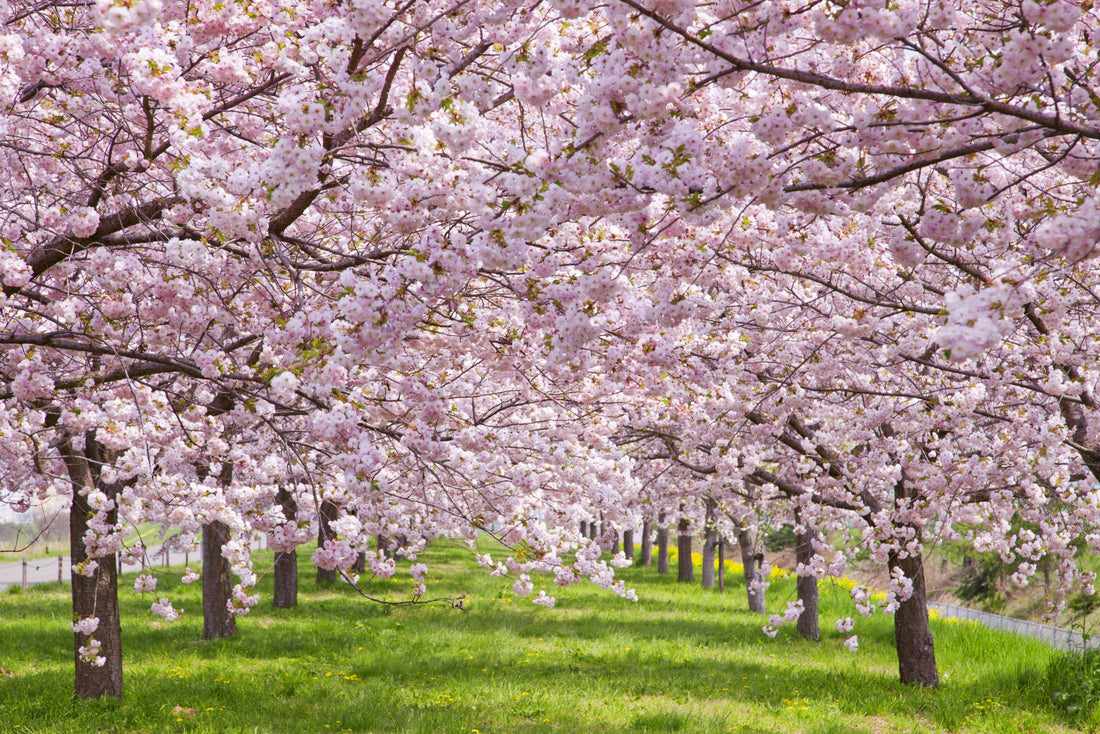Every spring, Victoria’s streets blush pink as her sidewalks collect petals like soft confetti. Even the most winter-weary Victorians can’t resist pulling out their phone and snapping at least one photo of this extra beautiful season… That's because it’s cherry blossom time again! And in Victoria, the annual display of cherry blossoms is more than just a pretty photo op; it’s a living monument to the pride, integrity and resilience of Japanese Canadians.
Based on the thousands of cherry trees Victoria that has, you’d think they were native to the island, but they aren’t. They were a gift from Victoria’s Japanese (Canadian) community, who introduced them in the early 20th century as a way to bring part of their homeland with them to Canada.
A little backstory: In 1934, there were 4,598 Japanese residents living between Victoria and Metro Vancouver, with the majority having either been born in the province, or being second-generation Japanese Canadians. Victoria’s community centered around Japantown (or “Nihonmachi”) near today’s Pandora Avenue. As Japanese businesses flourished, families settled in, and the city grew richer in both flavour and diversity.

The first prize winning float from 1937
In 1937, the Japanese Canadian community entered a float into the May Day parade, one that specifically marked Victoria’s 75th year of Victoria’s incorporation, taking first prize. Instead of pocketing the $300 winnings, the community used the prize money to buy 1,013 Japanese cherry trees to be planted in and around Beacon Hill Park, and surrounding areas. It was a beautiful gesture of grace, gratitude, and cultural pride, all rolled into one.
Then came the WW2; and with it, everything changed for Japanese Canadians.
Following Japan’s entry into World War II in 1942, the Canadian government ordered the forced removal and internment of over 22,000 Japanese Canadian families from all over British Columbia. On only 24 hours’ notice, authorities uprooted them and shipped them off to remote camps in the interior, where they lived under harsh conditions with minimal support.
After the war ended, the treatment of Japanese Canadians continued; authorities didn’t allow them to return to the coast until 1949, a full four years after peace had been declared. With the government restrictions controlling their movement finally removed, Japanese Canadian citizens returned to Victoria with practically nothing waiting for them. Their homes were gone, their businesses had been sold, and Japantown had been completely erased, both physically and in memory.
People consider the government’s treatment of them to be one of the worst human rights violations in B.C.’s history. But with so much loss, something remained…
The cherry trees, planted with so such pride years earlier, continued to blossom, bearing silent witnesses to the injustice. Each spring, as their bright pink colours lined our streets they became symbols of Japanese Canadians resilience, and as living tributes to a community that gave much to Victoria, even when it received little in return.
Finally In 1988, the federal government formally apologized to Japanese Canadians and offered them redress, but no sum of money can replace what was lost. Japantown never recovered, and is now just a distant memory.
So when springtime arrives each year, why not talk a walk under the iconic blooming trees and remind yourself of their place in our history; a history that’s rooted in friendship, disrupted by injustice, and quietly blooms with both forgiveness and remembrance.
So go ahead, take the photo. Breathe in the blossoms. But don’t forget to look back — because this pink-and-white spectacle is more than seasonal magic. Its legacy, in full bloom.

